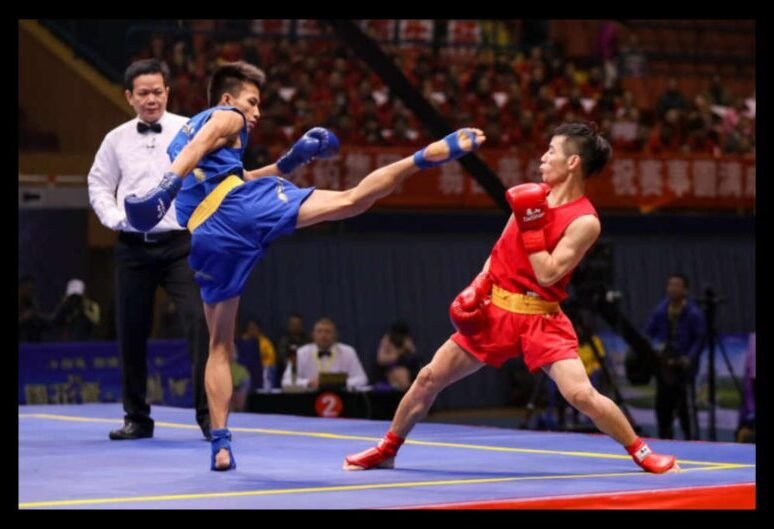Sanda fighters are trained to stay mobile, evasive, and opportunistic:
- Footwork and angle-cutting for ring control.
- Slips, parries, and counters to set up throws
- Push-pull pressure, especially on the leitai, to unbalance opponents.
Training avoids rigid forms, instead focusing on live drills, pad work, sparring, and conditioning — producing fighters who can fluidly shift between striking and grappling under pressure.

